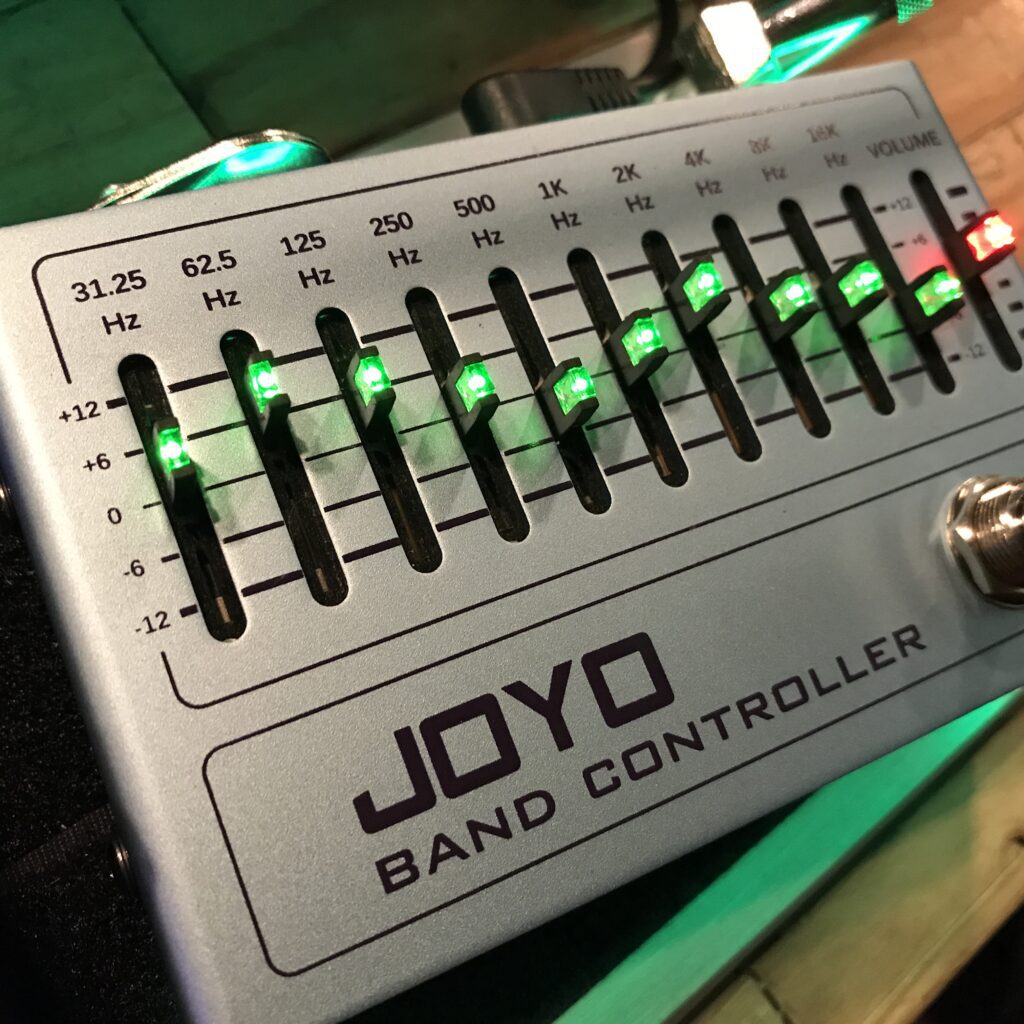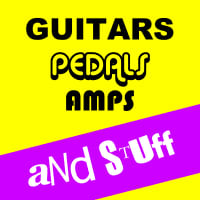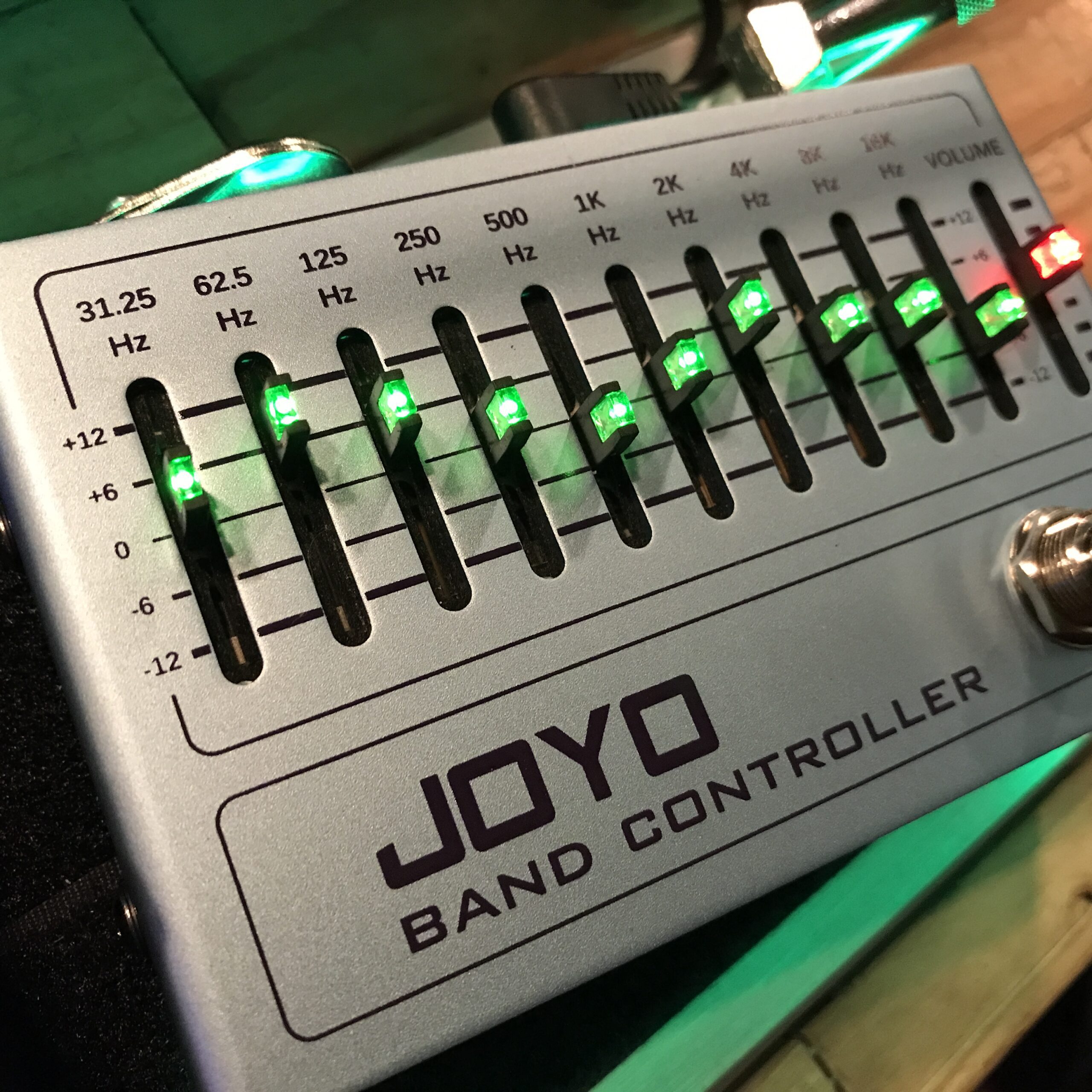Guitarists use EQ (Equalizer) pedals to shape and refine their guitar tone in various ways. Here are some scenarios, reasons, and methods for using an EQ guitar pedal:

- Tonal Adjustments:
- Room Acoustics: In different venues or recording environments, the acoustics may vary significantly. An EQ pedal allows the guitarist to adapt their tone to suit the room by boosting or cutting specific frequencies that might sound exaggerated or lacking in that space.
- Guitar and Amp Matching: Sometimes, a guitarist might use an EQ pedal to compensate for the tonal characteristics of their guitar or amplifier. For instance, if a guitar sounds too bright or lacks bass, an EQ pedal can help balance these tonal deficiencies.
- Feedback Control:
- EQ pedals can be used to mitigate feedback issues. By notching out or attenuating specific frequencies prone to feedback, especially when playing at higher volumes or with distortion, the guitarist can control unwanted squeals or howls.
- Tone Shaping:
- Boosting specific frequencies can emphasize certain aspects of the guitar tone. For example, boosting the mid-range frequencies can help a guitar cut through the mix in a band context, providing more presence and clarity to the sound.
- Sculpting Effects:
- When used in conjunction with other effects pedals, an EQ pedal can alter the response of those effects. For instance, placing an EQ pedal before a distortion pedal can shape the input signal, affecting how the distortion pedal responds and altering the final distorted tone.
- Solo Boost:
- Some guitarists use an EQ pedal as a solo boost. By setting up an EQ pedal with a volume boost on certain frequencies, they can step on it during solos to stand out in the mix without changing their entire tone.
As for how a guitarist would use an EQ pedal:
- Experimentation: A guitarist will often experiment with different EQ settings, adjusting frequencies and levels while playing through their amp and guitar setup to find the sweet spots that suit their playing style or the specific requirements of a song or performance.
- Placement in Signal Chain: The placement of the EQ pedal in the signal chain can significantly affect its impact. Placing it before or after certain effects can produce different results. For instance, placing it before distortion or overdrive can alter the tone differently compared to placing it after these effects.
In summary, guitarists use EQ pedals for fine-tuning their tone, adapting to different environments, managing feedback, shaping their sound, and even enhancing the performance of other effects in their setup. Experimentation and understanding how frequencies affect the overall sound are key elements in effectively using an EQ pedal.

